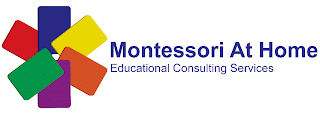Children are driven unconsciously, by an inner force, to develop particular skills at particular phases in their growth. Dr. Maria Montessori called these phases Sensitive Periods. During these periods, your child has a strong desire to learn particular skills, and does so in a seemingly effortless manner. Once the sensitive period is gone, the ease of acquiring the knowledge disappears and does not return. If your child does not have access to the materials he needs at the time of the Sensitive Period, it becomes more difficult for him to learn that same skill at a later time. The Chart of Sensitive Periods (see my earlier blog on this topic) can be used as a basic guideline to determine when your child may be ready to learn and when to introduce new concepts and activities.
Observe your child to see what he or she is focused on and follow that interest. Watch for cues as they arise and offer activities that coordinate with that interest. Your child may ask you if he can pour his own juice, or point to a plate of cookies and ask how many there are, or point to a word and ask what it says. When my grandson Johnny was two, my daughter noticed that he loved to screw lids onto jars. So she created an activity which included various sized jars and matching lids and before she knew it, he was an expert at the task!
Don’t’ insist that your child do a particular activity. Instead, ask him, “Would you like to do this or try that?” If you try to engage you child in an activity and there is no interest, just put it away. You can try again at another time. By observing your child’s interests, you will be right much more often than you are wrong about the activities your child is interested in.
During the first six years, it is important to lead children toward independence by helping them master daily life tasks (Montessori Practical Life Exercises) such as pouring their own juice, combing their hair, getting dressed, taking care of plants, helping in the kitchen, and many more. Ask your child “Would you like to help me fold the laundry, sort socks, set the table?” For best results, when showing your child a new skill or activity, think of each and every step, then demonstrate it s-l-o-w-l-y. Use as little talking as possible. Fewer distractions will help him concentrate on the task.
Here are a few tips to help you find appropriate learning materials:
- If your child shows an interest in a topic, think of as many activities as you can to support it. If your son loves airplanes, take a trip to the airport; go to the library to find factual books about airplanes, make a paper airplane and fly it, etc.
- Surf the internet to find sites with age appropriate information on specific subjects. One mom I know planted seeds with her children then found a worksheet on parts of a plant for her children to study and color. Try “googling” worksheets for kids.
- Check out these websites with valuable toys and activities for kids: MindWare, Young Explorers, Hearth Song, Magic Cabin, Insect Lore, For Small Hands (features Montessori activities) Back to Basics Toys, Toys to Grow On.
- Look for games that teach motor coordination, thinking skills, i.e., colors, counting, shapes, etc.
- Look for toys that focus on one concept only.
- Avoid toys with bells, whistles, and music that distract children from focusing on the concept.
- Go to the library and find informational books for your child.. Children crave information.
- Remember that young children learn by manipulating objects.
- Talk to other moms and share ideas.
Visit the Montessori At Home Website - http://www.montessoriathome.net
Visit Montessori At Home on Facebook - http://facebook.com/montessoriathome

No comments:
Post a Comment